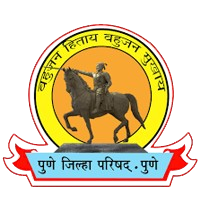BHOR
Population (2021)
- Total Population: 167,663
- Male: 84,902
- Female: 82,761
Geography
Bhor Taluka holds great historical significance and is blessed with natural resources and scenic beauty. It has been sanctified by the presence of Chhatrapati Shivaji Maharaj and played a vital role in the establishment of Swarajya with the support of Maval warriors from regions like Khedbare, Hirdas Maval, Gunjan Maval, Chalisgaon Valley, and Visgav Valley.
- Important Historical Sites:
- Rajgad Fort – First capital of Swarajya
- Raireshwar Plateau – Place where Chhatrapati Shivaji Maharaj took the oath of Swarajya
- Rohideshwar Fort (Vichitragad) and Kenjalgad Fort – Other notable forts in the region
- Major Dams:
- Bhatghar Dam – Built on the Velvandi River
- Nira Devghar Dam – Constructed on the Nira River
- Geographical Features:
- Bhor is nestled in the lap of the Sahyadri ranges.
- Average Annual Rainfall: Around 1,000 mm
Rivers
- Nira River
- Velvandi River
Transport
- Public Transport: Maharashtra State Road Transport (MSRTC) buses are available from Swargate, Pune, providing connectivity to Bhor Taluka.
Administrative Structure
- Revenue Villages: 195
- Gram Panchayats: 156
- Municipal Council: 1 (Bhor Municipal Council)
Tourist Attractions
- Mandhardevi (Kalubai Temple):
Located in Visgav Valley on the southern hill, it is a famous and ancient temple devoted to Goddess Kalubai. - Rohideshwar Fort (Vichitragad):
A historical fort from the Shivaji era located on a western hill. The Hirdoshi Maval region, part of the twelve Maval valleys, lies nearby. The origin of the Nira River is located here, where the Nira Devghar Dam is constructed. - Raireshwar Plateau:
A historically important site where Chhatrapati Shivaji Maharaj took the oath of Swarajya. It houses an ancient Shiva temple and is rich in medicinal plants like Hirda and other Ayurvedic herbs. - Shree Kshetra Nageshwar Temple, Ambavade:
Built in the 17th century in Hemadpanthi style, this temple was restored in 1937 by Raja Raghunathrao Pantsachiv. A suspension bridge adds to the beauty of this serene and naturally gifted




